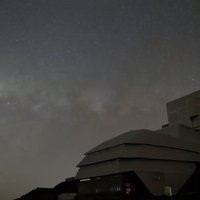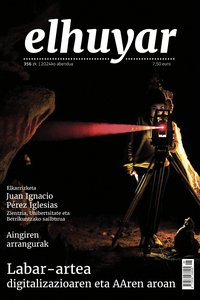Space technologies on Earth
Most of us see all space-related technology, complicated and far removed from everyday uses... but maybe we’re wrong. For example, a technology that was originally created by the European Space Agency
to investigate the lunar crust is currently being used to detect cracks in mines. This is just one example of one of the possible applications of space technologies on Earth. There are more of them.
We are located in Valladolid. Bus passengers can calculate their journey in detail. A GPS-based system indicates when the bus will arrive, or if it is chained somewhere or the amount of delay it takes.
The system has been developed by GMV, a company that started working on technologies for space.
MIGUEL ÁNGEL MARTÍNEZ; Director of Development. About the GMV: In the wake of 1990, a diversification strategy was adopted, and technology and know-how were added to our work in space. So we're talking about working on the GPS for ESA. That's what allowed us to embrace this technology and move us to the field of fleet management and possession.
90eko hamarkadan dibertsifikazio-estrategia ezarri genuen, espazioaren alorrean egindako lanean eskuratutako jakintza eta teknologian oinarrituta. We started working with GPS for ESA. This allowed us to understand this technology and from there we started working in the area of vehicle fleet locations and management. The
knowledge gained in satellite navigation, flight dynamics and mission analysis from the European Space Agency has also been established in other fields.
MIGUEL ÁNGEL MARTÍNEZ; Director of Development. About the GMV: The year 2000 decidimos poner in a brand new line of products in the healthcare sector, and we have used the technology that we have developed during simulation. "
in 2000 we decided to launch a new line of products in the field of health, using the same technology that we have developed in simulation.
The philosophy is simple: if virtual reality simulators are used to train astronauts in difficult tasks, why not use them to allow surgeons to improve their skills? Working with space technology involves playing at the first level: the materials must be light, but very resistant, have absolute reliability, and
safety is a priority at all times.
The challenge of space technology is complicated by the need to take industrial competitiveness to the highest level, which means attracting the most talented people to form the best teams.
JEAN-JACQUES DRETRIM; Director General of ESA: With the space to speak of the future, of the future of the citizens, of the future of knowledge and on the competitiveness of our industries. In summary, we talk about the jobs of the morning, so we believe that it is a good time to invert.
With space issues we are talking about the future, the future of citizens, the future of knowledge and the competitiveness of our industry. In short, we are talking about the jobs of tomorrow, so I think it is a good time to invest.
This is the assembly department of the Safran Group. Safran is responsible for assembling and testing the main engine of the Ariane 5 rocket, the new Vinci engine. The machine is complex and requires skilled labor and high technical knowledge.
JEAN-PAUL HERTEMAN; Safran: The people who take part in these adventures know that they are confronted with absolute demands of rendition and rigor. I want you to be the spirit of the whole group. When we make a brake or an engine of an avión sabemos cuál is our labor, and when we are confronted with the space challenges the demands of the rigos and the professionalism are exactly the same. Because here, the space is something unsustainable and exclusive.
Those who take part in these adventures know that they face demands for total performance and rigor. We want that to be the spirit of the whole team. When we make an aircraft brake or engine, we know what our role is, and even when we face space challenges, we want the same level of rigor and professionalism. That’s why space is something extraordinary, irreplaceable.
The technologies being used in the development of this new stage of the engine are of great importance for the evolution of the European propulsion sector. The facilities and the new engine expansion cycle are unique in Europe and will be the foundation for the future of rockets on the continent.
Buletina
Bidali zure helbide elektronikoa eta jaso asteroko buletina zure sarrera-ontzian











